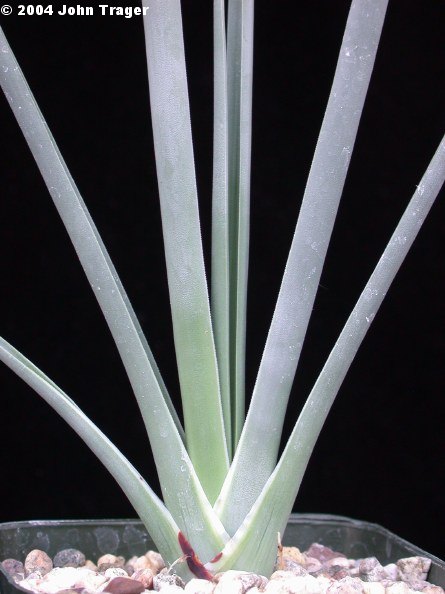The dragon trees have been the source of legend since ancient times as well as being exploited for their resinous sap known as “dragon’s blood”. This was a valuable preservative, in the past used for a range of applications from an ingredient in embalming fluids to the curing of wood used in Stradivarius violins. The Canary Island dragon tree, Dracaena draco, makes distinctive and imposing specimens in Mediterranean-climate gardens around the world. Its umbrella-shaped crowns spread to 9 m or more, with thick sausage-like branches held at gravity-defying angles for such heavy limbs. The similar Arabian species D. serrulata is rarely encountered in cultivation but is equally worthy. It differs in its narrow and rigid, glaucous foliage and slower growth. The specimen in the Huntington’s Desert Garden, though barely 2 m tall, has flowered and set enough seed to afford this distribution. Plants from self-pollination of HBG 21109, UCBG 67.552, collected by J. Lavranos in July, 1967, one of only four plants taken from a sparse population, Audhali Plateau, N of Lawdar, Yemen. $10.

Published in the Cactus and Succulent Journal, Vol. 76 (2), March - April, 2004